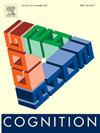Uncovering the latent structure of human time perception
IF 2.8
1区 心理学
Q1 PSYCHOLOGY, EXPERIMENTAL
引用次数: 0
Abstract
One of the ongoing controversies in interval timing concerns whether human time perception relies on multiple distinct mechanisms. This debate centres around whether subsecond and suprasecond timing may be attributed to a single semi-uniform timing system or separate and interacting cognitive systems. Whereas past studies offer valuable insights, this study overcomes previous limitations by adopting multiple convergent statistical approaches in a design with strong statistical power. We conducted two online experiments involving participants reproducing temporal intervals ranging from 400 to 2400 ms (Experiment 1; N = 302) and 1000 to 2000 ms (Experiment 2; N = 302). We contrasted the application of exploratory factor analysis and structural equation modelling to differentiate distinct latent structures underlying duration reproduction patterns. Additionally, we compared the model outcomes with results from changepoint analysis models fitted to individual participants' data. In both experiments, these analyses yielded evidence for a two-factor model comprising a general timing factor spanning the full interval range and a second factor capturing the regression to the mean of presented stimulus intervals (central tendency bias). We observed a low proportion of detected changepoints, further supporting the limited evidence for a hypothesized discontinuity between distinct underlying systems, while also finding that changepoint detection patterns were predicted by latent factor scores. These results suggest that the central tendency bias should be considered when investigating potential discontinuities in interval timing systems. Our work contributes to the integration of factor analytic and computational modelling approaches in the study of time perception and has implications for the measurement and interpretation of interval timing in a range of contexts.
揭示人类时间感知的潜在结构
在间隔计时中,一个持续存在的争议是关于人类的时间感知是否依赖于多种不同的机制。这场争论的中心是亚秒和超秒计时是否可以归因于一个单一的半均匀计时系统或独立的和相互作用的认知系统。尽管过去的研究提供了有价值的见解,但本研究通过在具有强大统计能力的设计中采用多种收敛统计方法,克服了以前的局限性。我们进行了两个在线实验,让参与者重现400 - 2400 ms的时间间隔(实验1;N = 302)和1000 ~ 2000 ms(实验2;n = 302)。我们对比了探索性因子分析和结构方程模型的应用,以区分不同的潜在结构的持续繁殖模式。此外,我们将模型结果与适应个体参与者数据的变化点分析模型的结果进行了比较。在这两个实验中,这些分析为一个双因素模型提供了证据,该模型包括一个跨越整个区间的一般时间因素,以及一个捕捉到呈现的刺激区间的均值回归的第二个因素(集中趋势偏差)。我们观察到检测到的变化点的比例很低,进一步支持了不同底层系统之间假设不连续性的有限证据,同时也发现变化点检测模式是由潜在因素评分预测的。这些结果表明,在研究区间定时系统的潜在不连续时,应考虑集中趋势偏差。我们的工作有助于在时间感知研究中整合因素分析和计算建模方法,并对一系列背景下间隔时间的测量和解释产生影响。
本文章由计算机程序翻译,如有差异,请以英文原文为准。
求助全文
约1分钟内获得全文
求助全文
来源期刊

Cognition
PSYCHOLOGY, EXPERIMENTAL-
CiteScore
6.40
自引率
5.90%
发文量
283
期刊介绍:
Cognition is an international journal that publishes theoretical and experimental papers on the study of the mind. It covers a wide variety of subjects concerning all the different aspects of cognition, ranging from biological and experimental studies to formal analysis. Contributions from the fields of psychology, neuroscience, linguistics, computer science, mathematics, ethology and philosophy are welcome in this journal provided that they have some bearing on the functioning of the mind. In addition, the journal serves as a forum for discussion of social and political aspects of cognitive science.
 求助内容:
求助内容: 应助结果提醒方式:
应助结果提醒方式:


